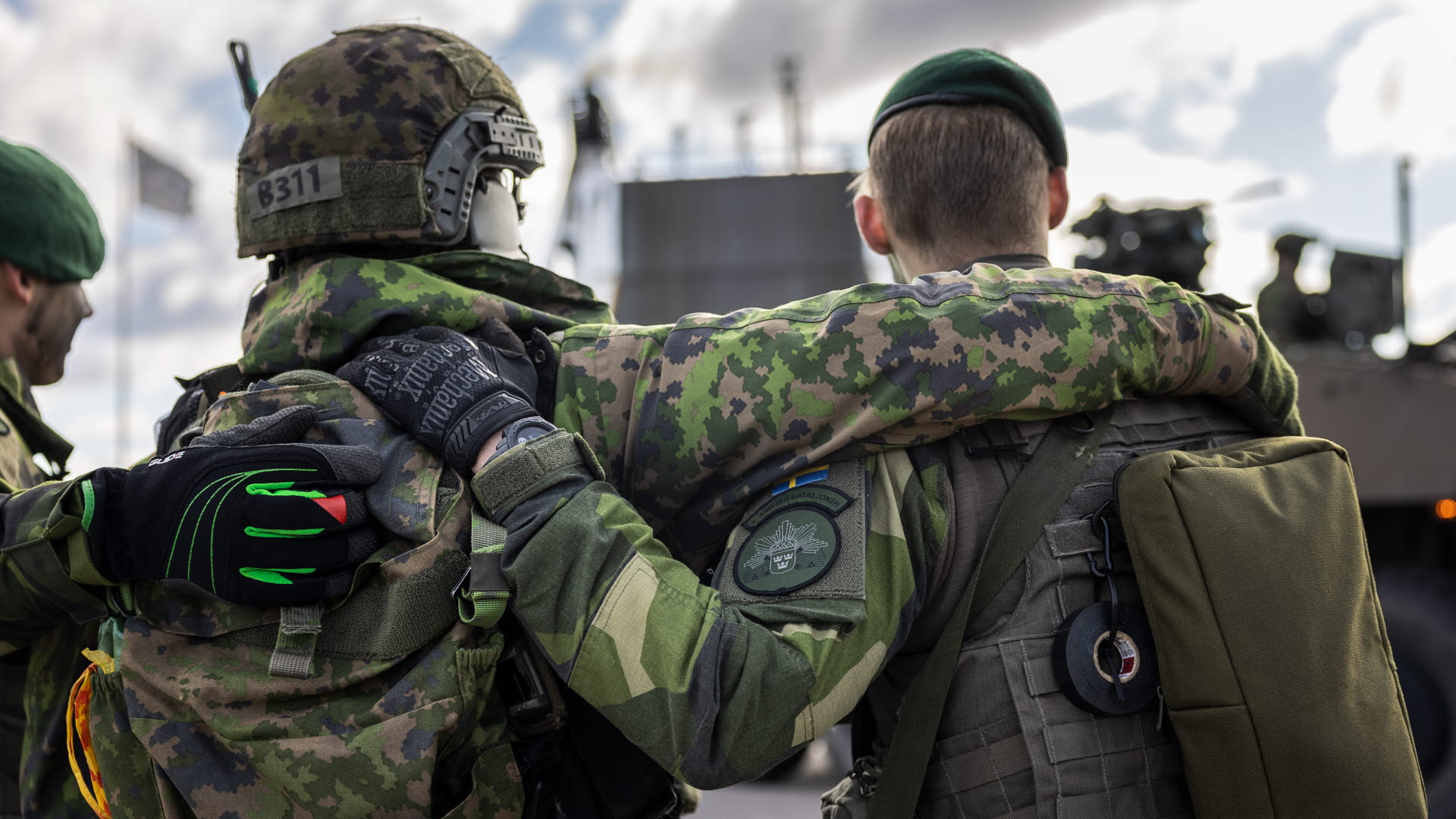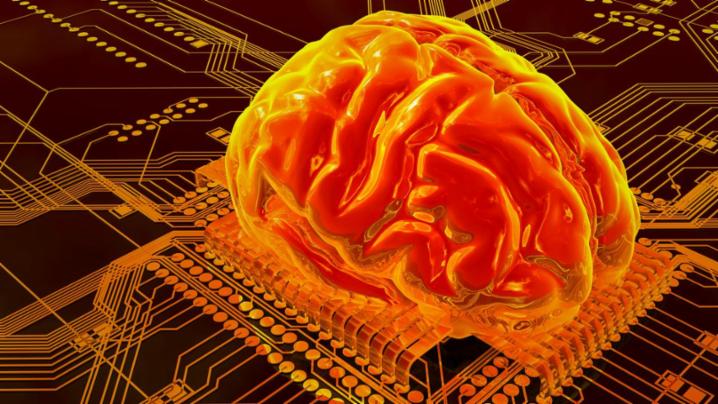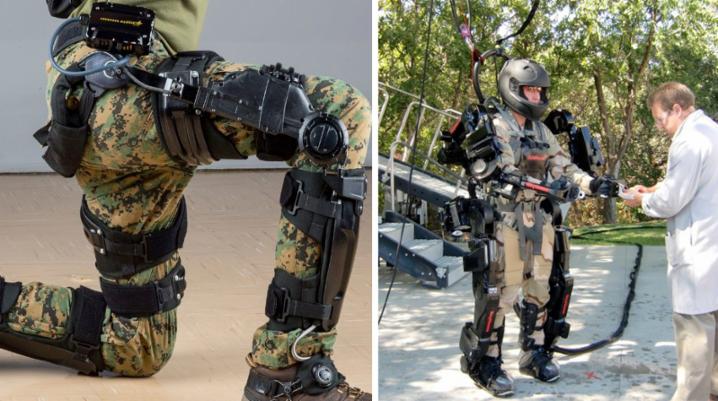“Designed to modify perceptions of reality, whole-of-society manipulation has become a new norm, with human cognition shaping to be a critical realm of warfare.” – NATO
If you haven’t already, you should start your journey with our earlier introduction to Cognitive Warfare:
German scientist Dr. Jonas Tögel demonstrates in his book “Cognitive Warfare: The Latest Manipulation Techniques as a NATO Weapon” how NATO utilizes scientific insights from psychology, propaganda, and mass manipulation not only to influence the citizens of other countries but also to control public opinion within its own nations and make them ready for war:
Happening in 2024: Advancements in Cognitive Warfare, Multi-Domain Operations, Future Operating Environments
NATO’s Strategic Warfare Development Command, January 8, 2024

The year 2024 is poised to be a transformative period for NATO Allied Command Transformation, marked by pivotal developments in various strategic areas. Notably, this year will witness the unveiling of the Cognitive Warfare Concept, as well as the Future Operating Environment Study 2024, the maturation of Multi-Domain Operations, and the welcoming of Sweden into the NATO Alliance.
Cognitive Warfare Concept
At the forefront of NATO’s Warfare Development Imperative lies the Cognitive Warfare Concept which will be released later this year. Envisioned to counter persistent cognitive threats, this concept aims to proactively shape the environment against cognitive attacks that undermine the Alliance’s Military Instrument of Power. Recognizing adversaries’ attempts to disrupt cohesion and democratic values, this concept, part of NATO’s Warfare Development Agenda, is vital. This inclusion highlights the importance of military preparedness in a dimension where adversaries persistently attack the Alliance below the threshold of Armed Conflict, with malign intent to undermine cohesion, trust and democratic values.
Future Operating Environment 2024
Building upon Strategic Foresight Analysis 2023, the Future Operating Environment Study 2024 examines evolving adversaries, operational domains, and future warfare attributes. The Study will advise on the evolving strategies and capabilities of strategic competitors; assess the attributes of the changing operational domains and effects dimension; and analyse the unique characteristics of future competition and confrontation. It aims to equip NATO with comprehensive insights, enabling anticipation and effective navigation through the complexities of tomorrow’s security landscape.
Multi-Domain Operations
Representing a paradigm shift for NATO, Multi-Domain Operations integrates military activities across all operating domains and environments. These actions are synchronized with non-military activities and enable the Alliance to create desired outcomes at the right time and place. This transformative approach aims to deliver tailored options, strategically influencing adversaries’ behaviours while safeguarding the freedom and security of NATO’s population.
Multi-Domain Operations encourages collaboration between military and non-military partners, stakeholders, and industry experts by providing robust mechanisms for information sharing and the synchronization of capabilities that can reduce military risk and increase the probability of mission success. Multi-Domain Operations puts everything on the table for decision makers to consider a spectrum of tailored options it can deliver while creating targeted effects at speed and scale in today’s often volatile and rapidly changing security environment.
Cognitive Warfare NATO ACT

NORFOLK, VA – Cognitive Warfare includes activities conducted in synchronization with other Instruments of Power, to affect attitudes and behaviours, by influencing, protecting, or disrupting individual, group, or population level cognition, to gain an advantage over an adversary. Designed to modify perceptions of reality, whole-of-society manipulation has become a new norm, with human cognition shaping to be a critical realm of warfare.
Cognitive Warfare focuses on attacking and degrading rationality, which can lead to exploitation of vulnerabilities and systemic weakening. However, this becomes increasingly complex as non-military targets are involved. An example: Russian social media and public information operations targeted much of the international community in an attempt to label Ukraine as being at fault. Through a combination of communication technologies, fake news stories, and perceptions manipulation, Russia aims to influence public opinion, as well as decay public trust towards open information sources. These narratives have extensive reach, and often involve both offensive and defensive posturing.
China, as a strategic competitor for NATO, describes Cognitive Warfare as the use of public opinion, psychological operations, and legal influence to achieve victory. Combat psychology has significant impact on the warfighter’s ability to function; Intelligent Psychological Monitoring System, a recent smart sensor bracelets developed by China, focuses on recording facial information, emotional changes, and psychological states of soldiers to determine their combat status. Outside of the battlefield, influence can also affect law, rule-of-order, and civil constructs. This inclusion of “Lawfare” and the targeting of broader community sentiment has significant impact, since so many civilians and non-combatants are potentially exposed.
Allied Command Transformation manages the Cognitive Warfare Exploratory Concept, which is part of the larger Warfare Development Agenda. Synchronization of adversarial effects against emotional and subconscious domains are increasing; understanding frameworks, definitions, impacts, and risks enables better political decision making, military capability development, and overall Alliance-wide security. Allied Command Transformation educates, collaborates, protects, and shapes NATO forces on the topic of Cognitive Warfare, providing guidance on awareness, civil-military cooperation, societal resilience, and data sharing for the Alliance’s current and future security considerations.
Cognitive Biotechnology: opportunities and considerations for the NATO Alliance
- Johns Hopkins University & Imperial College London, 26 February 2021
Advances in biophysical, biochemical and behavioural technologies are beginning to turn science fiction into reality. These developments offer exciting possibilities, while also raising issues with regard to ethics and responsible use
The Alliance faces a range of significant opportunities in emerging and disruptive technologies. The field of Cognitive Biotechnology (CBT) is an emerging domain with wide ranging implications for Alliance members’ economic and military competitiveness. And, as was discussed in the case of Artificial Intelligence, developments in this field will require both a dynamic adoption of new technologies and a focus on their responsible governance.
CBT is the ability for technology to enhance and improve human thinking, sensing, coordinating, and acting upon the physical and societal environment. With CBT, our effectiveness—normally constrained by the limits of human physiology – can now be extended and augmented by biophysical, biochemical, or bioengineered means.
The field is in its infancy, but its implications are vast. For instance, in the last decade scientists have accurately melded brain signals with machine interfaces to create mind-controlled prosthetics. More recently they have made this flow of information bi-directional, creating prosthetics that can now feel sensation and send these feelings back to the brain.
If humans can actuate (i.e. put into motion or action) machines, and these machines can in turn actuate humans, then we have moved beyond the confines of our own physiology. Moreover, if these machines are mobile and can interact with our minds at a distance, then we have extended our reach beyond our own physical limits.
Conversely, our inner minds are no longer off limits either: while emerging brain-computer interfaces allow us to train and direct computers, computers are increasingly able to peer into our minds and to train and enhance us. Or, to put it another way, while we have been working to improve and enhance our machines, we now realise that our machines can enhance, improve – and possibly control – us.

Photo courtesy PRISM, NDU
When considering the wide-ranging uses of CBT, it helps to distinguish among three broad application areas, which can be called “the 3 R’s” – Recover, Raise, and Replace.
- Recover includes the repair or rehabilitation of cognitive and biological impairments that prevent the mind and body from functioning effectively. The goal is to return abilities back to baseline functionality. Applications include helping injured soldiers recover their physical capabilities; healing traumatic brain injury; treating post-traumatic stress disorder (PTSD); recovering or (in cases of traumatic stress) suppressing memories; and restoring decision-making and executive functions.
- Raise includes the augmentation and enhancement of cognitive and physiological function past an individual’s natural baseline, thereby effecting dramatic changes in operational effectiveness, preparedness, and training. Applications include sensory enhancement (such as seeing farther or hearing more acutely); faster information processing; quicker and more effective decision-making; more efficient learning and language acquisition; and greater physical exertion and endurance. What is true for individual capabilities could similarly be true for groups. CBT could be used to raise unit capabilities through distributed intelligence – that is, all members of the unit see and know what each individual member sees and knows, thus reducing the “fog of war” and improving rapid decision-making, as well as enabling more rapid acquisition and assimilation of new fighting techniques and technologies.
- Replace includes the enhancement (and possibly substitution) of mental and physical functions past the bounds of human potential. Sensory connections could be replaced with computer interfaces, making human capabilities independent of their five natural senses. Verbal communication could be replaced by computer-aided telepathy or data downloads. Physical action could be replaced by remote robots or “loyal wingman” drones directed by the mind of the operator. This is perhaps the most futuristic form of enhancement, with most research and development nascent in nature. It is important to note that this form of enhancement does not completely remove human interaction, or else it would be simply another form of automation; it is really about the merger of human biology and mechanical actuation.
These distinctions may prove helpful in setting priorities for further research, investment in technological development, and adoption for operational use. And they could also help in setting principles of responsible use, considering the three categories’ differing levels of technical risk and ethical uncertainty.
The current state and future potential of CBT
Cognitive Biotechnologies are at present focused on three main areas of research: biophysical, biochemical and behavioural. The future direction of these technologies is difficult to predict, particularly as many are still emerging. But they have the potential to significantly disrupt existing assumptions about the evolution of civil society, the economy, and military affairs. It is therefore in the interest of the Alliance to closely monitor the rise of those technologies and applications that are most likely to affect or disrupt current defence constructs and doctrine. Moreover, it will be important to direct early-stage investment into those areas that are particularly promising for the Alliance, or to those which will most likely impact its competitiveness.
Biophysical technologies
Advances in the biophysical area centre on brain computer interfaces (BCI), which can be directly inserted into the human body or via transcranial direct-current stimulation (tDCS). tDCS is a form of neuromodulation that uses constant, direct currents delivered via electrodes on the head, and can be worn or removed at will. While BCI was originally developed to provide assistive technologies (such as prosthetic arms and mentally controlled wheelchairs), recent developments in bi-directionality have allowed for enhanced sensing, for example, bionic eyes or other enhancements to situational awareness. Further applications of these technologies could lead to mental control of aircraft or ground vehicle systems; mind-guided drones or missiles; or the mechanisation of soldiers via exoskeletons and advanced sensors.

credit image 1: © Lockheed Martin
credit image 2: © Army Technology
At the same time, tDCS applications have been shown to regulate the human brain itself, affecting the brain’s executive functions, learning mechanisms, memory, language processing, sensory perception, and motor functions. Current work with tDCS focuses on recovery from PTSD and treatment of mental ailments like obsessive compulsive disorder. But the technology also provides for the possibility of raising soldiers’ cognitive and physical capabilities: to analyse scenarios more easily and quickly; to retain and retrieve memories with greater acuity; to modulate perceptions of pain; to improve psychological self-protection; and to embed muscle memory and motor skills more quickly. Another controversial aspect of tDCS is the potential to look inside the mind of the user, to display and play back past memories on an external monitor, or even to insert synthetic memories and images into the mind.
Biochemical technologies
Biochemical research has focused on enhancements to human physiology and cognitive function via drugs, genetic modification and biological derivatives. Combinations of nootropic compounds, both natural and synthetic, have been shown to rebalance and optimise neurochemistry for improved brain and nervous system function and efficiency. These have the potential for raising alertness and attention; speeding up reaction times; enhancing endurance and mental resilience; reducing apprehension and fear; and improving group dynamics and coordination. Recovery aspects include the treatment of depression, PTSD, memory loss, and dementia.
Behavioural technologies
Behavioural research is focused on the modification and improvement of cognitive and motor function through learning algorithms, virtual reality and biofeedback methods. Virtual reality environments have already demonstrated their use in the training of pilots, tank crews and infantry. Mental acuity can be enhanced by training and gamification algorithms. Behaviour and personal habits can be altered by reinforcement learning methods. Applications focus on both improvement and recovery, with recent advances in the treatment of PTSD and behavioural disorders.

© U.S. Army
The integration of real-time cognitive and physiological user data (e.g., measures of attention, heart rate, etc.) opens a new vista for raising physical and cognitive performance. Motivational stimuli can be delivered back to the user based on his current physiological and mental state via machine learning-derived algorithms. The future of a personal coach on an intelligent FitBit that motivates and guides you to peak performance may not be too far away. The aggregation of anonymised data from individual performance outcomes into big datasets could further improve these algorithms. The result may be a FitBit that knows you better than you know yourself.
Ethical issues and responsible use
There are several ethical considerations for CBT that may transcend even AI in their complexity. First is the issue of personal agency. If CBT is able to motivate, enable, and even control human decision making and action, where does individual responsibility end? Are soldiers responsible for their actions when under the influence of advanced CBT, and under what conditions?
Relatedly, how does the Alliance ensure that there is sufficient consent for the use of CBT for individuals tasked to use the technology? These technologies can be invasive, both physiologically and mentally, and have the potential to cause harm, particularly as we do not fully understand their unintended cognitive and biological consequences.
In addition, significant privacy concerns will be raised once these technologies can enter our minds and see our most private thoughts and memories. What are the limits of such searches? And what are the protections for physiological and cognitive data, and who may store and control their dissemination or cause their deletion? More generally, what protections will we have against the potential of mind control, cognitive erasure, and reprogramming?
The Alliance’s success with CBT will depend upon well-designed principles and practices relating to these ethical considerations, since the adoption and integration of these technologies will be based on the consent and acceptance of Allied governments and their societies at large. As in the case of AI, the Alliance and member governments will need to develop principles of responsible use, addressing such issues as privacy, consent, lawfulness, responsibility and governability.
Chemicals in Cognitive Warfare: A Peek Inside the Mind-Modifying Arsenal

To be continued?
Our work and existence, as media and people, is funded solely by our most generous supporters. But we’re not really covering our costs so far, and we’re in dire needs to upgrade our equipment, especially for video production.
Help SILVIEW.media survive and grow, please donate here, anything helps. Thank you!
! Articles can always be subject of later editing as a way of perfecting them
Click this link for the original source of this article.
Author: Silviu "Silview" Costinescu
This content is courtesy of, and owned and copyrighted by, https://silview.media and its author. This content is made available by use of the public RSS feed offered by the host site and is used for educational purposes only. If you are the author or represent the host site and would like this content removed now and in the future, please contact USSANews.com using the email address in the Contact page found in the website menu.








